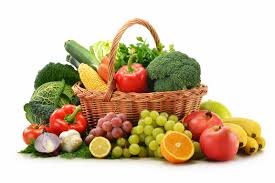Foods commonly consumed by humans include cereals and cereal products, starchy roots and tubers, legumes (pulses), leafy vegetables, fruits, nuts, seeds, sugars, syrups, sweets, preserves, meat, poultry, other meat products, seafood, shellfish, eggs, roe, milk, cream, cheese, fats, oils, herbs, spices, non-alcoholic and non-dairy beverages, alcoholic beverages, dietetic preparations, and miscellaneous items like salt, maggi cubes, iru, vinegar, and fermented condiments.
This article provides an insight into the quantity and quality of food consumed, identifying many major and minor chemical components in food. By the end of the article, it will be possible to determine whether the diet fulfills the natural requirements to maintain good health.
Food Groups Necessary in Human Diet: Bread and Cereal
Cereals common in sub-Saharan Africa include corn, sorghum, and millet. Corn differs from other cereals in that the yellow variety contains carotenoids with provitamin A activity. Another special feature is its low content of tryptophan.
The niacin in corn is in a bound form that cannot be digested and absorbed by humans unless pre-treated with lime (calcium hydroxide) or by roasting. Most cereals contain little fat, though oats contain 7%. Wheat contains a type of dietary fiber (arabinoxylan hemicellulose) that is particularly valuable for the treatment and prevention of constipation. It increases the bulk of feces and shortens the mouth-to-anus transit time. Bran is a concentrated source of the same dietary fiber.
Cereals are largely consumed as bread and, to a lesser extent, as cakes, crackers, and breakfast cereals. They are also consumed in other forms in some countries, such as boiled, crushed, or rolled, and made into pasta.
Wheat and rice are the two major cereals for human consumption: wheat in Europe, North America, and northern India, and rice in East and Southeast Asia. The nutritional weakness of rice is its low thiamine and riboflavin content when it is milled into polished rice, which can lead to beriberi.
The bread-cereal group includes all breads and cereals that are whole-grain or enriched. Although the protein content in cereals is not high, these products can serve as significant sources of protein when consumed in large quantities.
All cereals are very high in starch, making them an inexpensive energy source. The fat content of cereal products is generally very low unless the germ is included. Whole-grain products contribute significant quantities of fiber and trace vitamins and minerals such as pantothenic acid, vitamin E, zinc, copper, manganese, and molybdenum.
Read Also: Recommended Number of Ruminant Animals per Housing Unit for Fattening
Fruits and Vegetables
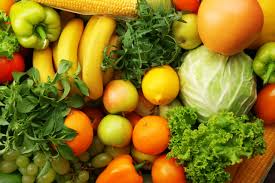
Fruits and vegetables have similar nutritive properties. Because 70% or more of their weight is water, they provide comparatively little energy or protein, but many contain vitamin C and carotene, two nutrients not found in cereals.
Fresh fruits, particularly citrus fruits and their juices, are rich in vitamin C, which is easily destroyed when cooked. Fruits and vegetables also contain fiber, which adds bulk to the intestinal content and is useful in preventing constipation.
Most vegetables are important sources of minerals, vitamins, and cellulose. Some vegetables, such as potatoes, contribute appreciable amounts of starch. Vegetables like beans, peas, and broccoli contain high levels of minerals, including calcium and iron. Vegetables also help meet the body’s need for sodium, chloride, cobalt, copper, magnesium, manganese, phosphorus, and potassium.
Carotenes (the precursor of vitamin A) and ascorbic acid (vitamin C) are abundant in many vegetables. Vegetables are also valuable sources of roughage. Citrus fruits provide vitamin C, while yellow-colored fruits such as peaches contain carotene. Dried fruits are rich in iron, and figs and oranges are excellent sources of calcium. Fruits, like vegetables, have high cellulose content.
Milk
The milk of each species of animal is a complete food for its young. One pint of cow’s milk contributes about 90% of the calcium, 30-40% of the riboflavin, 25-30% of the protein, 10-20% of the calories and vitamins A and B, and up to 10% of the iron and vitamin D needed by an adult.
The milk of mammals contains all essential nutrients. Human milk is the perfect food for infants, provided the mother is healthy and well-nourished and the infant is full-term. Breast milk contains important antibodies, white cells, and nutrients. In communities where hygiene is poor, breast-fed babies have fewer infections than formula-fed babies.
The milk group includes milk and milk products, cheese, and ice cream. Milk is a complete protein food containing several protein complexes. It also contains important amounts of most nutrients, but is very low in iron, ascorbic acid, and niacin.
Calcium and phosphorus levels in milk are high. Whole milk is rich in vitamin A, but this fat-soluble vitamin is removed in the production of skim milk. Riboflavin is present in significant quantities in milk unless the milk has been exposed to light.
Cow’s milk is a good food for human adults, but the cream (fat) contains 52% saturated fatty acids (longer than 10 carbon atoms in length) compared to only 3% polyunsaturated fat.
This fat raises plasma cholesterol levels and is thought to contribute to coronary heart disease, along with the same fat in concentrated forms (cream and butter).
To address this, the dairy industry has developed low-fat cow’s milk (with 2% instead of almost 4% fat), very low-fat skim milk, or skim milk with extra non-fat milk solids (lactose, protein, and calcium), which give more body to the milk.
Lactose, the characteristic sugar of milk, is a disaccharide composed of the monosaccharides glucose and galactose. While these monosaccharides are easily absorbed, lactose is not. It passes to the large intestine, where it is fermented by resident bacteria, producing gas and sometimes causing diarrhea.
In the late 1960s, it was discovered that adults of many ethnic groups couldn’t break down large quantities of milk lactose into galactose and glucose. They lose most of their intestinal lactase enzyme activity as they grow up, a condition known as lactose intolerance. It is now recognized that such individuals share this deficiency with adults worldwide, especially in Asia and Africa, and with most of the animal kingdom.
Northern Europeans are an exception, usually retaining full intestinal lactase activity into adult life. People with little lactase can still consume large amounts of milk if it is soured, if lactobacilli have split most of the lactose into lactic acid, or if the lactose has been treated with commercially available lactase.
The vitamin C in milk is destroyed by heating (pasteurization), which is required in many countries to prevent the spread of bacterial infections. Cheese-making is an ancient method used to convert surplus milk into a food that can be stored without refrigeration.
Cheese is rich in protein and calcium and a good source of vitamin A and riboflavin. However, most cheeses contain about 25-30% fat, which is mostly saturated, and they are often high in salt (sodium).
Meat
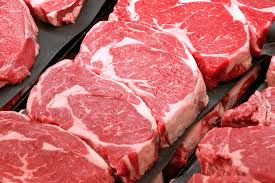
Meat Substitutes, Fish, and Eggs
Meats generally consist of about 20% protein, 20% fat, and 60% water. The amount of fat in a portion of meat varies greatly, depending on the type of meat (e.g., pork, beef, lamb) and its quality. The energy value of meat varies with its fat content.
Meat is valued for its high-quality protein and is an excellent source of B vitamins. Pork is the best source of thiamine, followed by liver and skeletal muscle from any meat source. Meat is also a good source of niacin, vitamin B6, vitamin B12, and minerals like iron, zinc, phosphorus, potassium, and magnesium. Liver stores vitamins A and B12 and is rich in riboflavin and folic acid.
The meat and meat substitutes group includes beef, veal, lamb, pork, organ meats (liver, heart, and kidney), poultry, eggs, fish, shellfish, dried peas, beans, and nuts. Meat is also rich in cholesterol, which contributes to coronary artery disease. Fish is beneficial because its fatty acids are largely polyunsaturated. Eicosapentaenoic acid, one of the major fatty acids in fish, reduces the tendency to thrombosis.
Eggs have a high reputation as a nutritious food. The white is protein, while the yolk is rich in protein and vitamins A, D, E, and B. Eggs also provide zinc, calcium, and iron, with little saturated fat and few calories. However, the yolk has high cholesterol content, which, when elevated in the bloodstream, increases the risk of coronary heart disease.
Research suggests that consuming up to one egg a day does not significantly increase heart disease risk in healthy individuals. Eggs should be stored in a refrigerator, where they can remain fresh for 4-5 weeks, although hard-boiled eggs last only one week.
Eggs age more in one day at room temperature than in a week in the refrigerator. To prevent food poisoning, eggs should be cooked at low or medium heat, with the white fully coagulated and the yolk starting to thicken. Eggs should not be cooked whole in a microwave oven, as they will explode.
Starchy Roots
Potatoes, cassava, and yams are valuable, inexpensive sources of energy. Their nutritional value is similar to cereals, though they have a lower protein content. Protein deficiency may be common in tropical communities where cassava or yams are staple foods. Potatoes, however, provide some protein, though less than cereals, and contain some vitamin C. Sweet potatoes contain beta
Fat and Oil-Based Foods
Animal fats consumed by humans include butter, beef suet, pork lard, and fish oils, while important vegetable oils include olive, peanut, coconut, cottonseed, sunflower seed, soybean, safflower, rapeseed, sesame, mustard, red palm, and corn oils.
These fats are calorie-dense, with butter containing vitamins A and D, and red palm oil containing carotene, which the body converts to vitamin A. Margarines often have added vitamins A and D in controlled amounts.
Butter, margarine, other fats, oils, sugars, and unenriched refined-grain products are typically added to diets to round out meals, satisfy appetites, and provide calories. These foods contribute to overall caloric intake and enhance the total nutrient value of meals when added during food preparation.
Read Also: Recommended Number of Ruminant Animals per Housing Unit for Fattening
Beverages
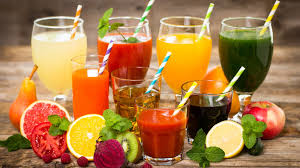
While adults drink around one to two liters of water daily, much of this intake is in the form of coffee, tea, fruit juices, soft drinks, beer, wine, or spirits, which are primarily consumed for their taste or effects rather than nutritive value.
Fruit juices, however, are valuable for their vitamin C content and are good sources of potassium but low in sodium. Coffee contains some niacin, while tea provides fluoride and manganese. Beer typically contains 2-6% alcohol, natural wines 10-13%, and spirits up to 40%.
Alcohol has an energy value of seven kilocalories per gram, providing significant caloric intake, with beer and wine containing natural sugars as well. The primary vitamin found in beer is riboflavin, while wines often contain iron, though excessive consumption of iron-rich wines can lead to harmful liver conditions.
Changing Food Habits and Related Problems
Traditional food habits seldom cause malnutrition or deficiency diseases unless accompanied by poverty or environmental limitations that restrict food variety. Poor communities consuming protein-low staples, such as cassava or plantain, without supplements like legumes or animal products may face protein deficiencies like kwashiorkor.
Similarly, maize-based diets without additional foods can lead to pellagra. Advancements in agriculture and food processing have improved food availability and dietary nutrition. However, the shift towards modern and westernized diets has introduced negative impacts, such as the preference for refined rice over locally parboiled rice, contributing to outbreaks of deficiency diseases like beriberi.
In affluent societies, changing food habits have led to higher fat and protein consumption, particularly from animal sources, while carbohydrate intake has decreased. This shift is considered an inefficient use of agricultural resources. Coupled with the sedentary lifestyle and increased reliance on fast food, nutritional deficiencies and obesity have become more prevalent.
The rise in saturated fat and cholesterol intake, along with insufficient physical activity, has been linked to cardiovascular diseases in both developing and developed nations. In developed countries, up to 40% of calories are derived from fat and 20% from sugar, which can displace other essential nutrients in the diet, leading to deficiencies in iron, calcium, complex carbohydrates, and fiber, increasing the risk of health issues such as obesity.
Read Also: Recommended Number of Ruminant Animals per Housing Unit for Fattening
Food Composition
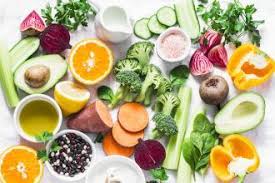
1. Proteins: Proteins are essential for building body tissues and regulating bodily functions such as muscle contraction and blood pressure. They also synthesize enzymes, hormones like insulin, and complex substances that govern body processes.
Proteins consist of amino acids linked by peptide bonds, forming long chains known as polypeptides. A protein’s unique size and three-dimensional structure result from the specific sequence and number of amino acids, giving each protein its distinct properties.
2. Protein and Nutrition: Humans need a diet that contains essential amino acids because the body cannot synthesize them. Animal proteins are considered complete because they contain all essential amino acids, while plant proteins may lack some.
A balanced diet with both animal and plant sources of protein is recommended. Protein deficiency can lead to conditions like kwashiorkor, especially in children, while excessive protein intake in countries with meat-heavy diets is linked to gout, heart disease, and certain cancers.
3. Fats: Fats, or lipids, are stored by both plants and animals as energy reserves. In animals, fat serves as insulation and protection, while in plants, fats, often in the form of oils, are found in seeds and fruit. Fats are highly efficient sources of energy, providing more than twice the energy per gram compared to carbohydrates and proteins.
They play essential roles in metabolism, protection from shock, and temperature regulation. However, the modern accumulation of body fat due to lifestyle changes has led to health concerns, including obesity and heart disease.
Saturated fats, mostly from animal sources, can increase cholesterol levels in the blood, while unsaturated fats, found in vegetable oils, tend to lower cholesterol levels.
Fats consist of fatty acids and glycerol, with saturated fats being solid at room temperature and unsaturated fats typically liquid. The body continuously breaks down and builds up fatty acids to provide metabolic energy, making them essential for normal bodily functions.
4. Carbohydrates: Carbohydrates are the most abundant organic compounds in nature, produced by green plants through photosynthesis. They are the primary source of energy for both plants and animals.
Carbohydrates include sugars, starches, and cellulose, all of which have various functions and forms. In plants, carbohydrates are stored as starch, while in animals, they are stored as glycogen. In the human body, carbohydrates are broken down into glucose, which serves as the primary fuel for cells.
Carbohydrates and Nutrition
Carbohydrates are classified into starches and sugars, with complex carbohydrates such as unrefined grains and vegetables providing essential nutrients, including proteins, vitamins, minerals, and fats. In contrast, refined sugars found in soft drinks and sweets offer “empty calories” with minimal nutritional value.
Carbohydrates are broken down into simple sugars like glucose during digestion, which is then absorbed and used for energy production or stored as fat for future use. Excessive intake of refined carbohydrates and sugars can lead to weight gain and health problems such as diabetes.
Food composition is balanced between proteins, fats, and carbohydrates, with cereals, roots, and tubers providing energy and B vitamins, while legumes, leafy vegetables, and animal products provide essential proteins and nutrients. Maintaining this balance is crucial for overall health and well-being.
Do you have any questions, suggestions, or contributions? If so, please feel free to use the comment box below to share your thoughts. We also encourage you to kindly share this information with others who might benefit from it. Since we can’t reach everyone at once, we truly appreciate your help in spreading the word. Thank you so much for your support and for sharing!
Read Also: 4 Steps to help an Orange Tree Produce Sweet Oranges
Frequently Asked Questions
We will update this section soon.

